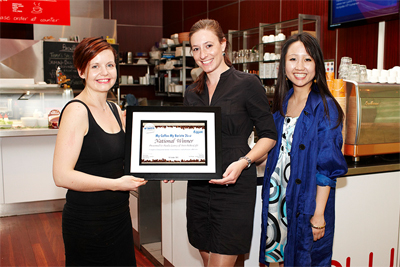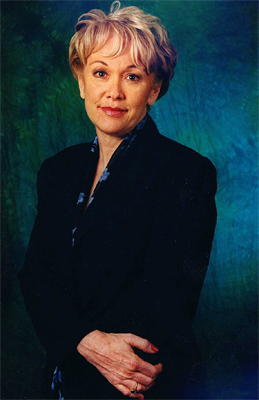Danielle Ross & Professor Campbell Equal Sugar Tool Interview

Danielle Ross and Professor Campbell Equal Sugar Tool Interview
A quarter of Australians do not limit their consumption of sugar and an alarming number of adults are regularly consuming sugary foods and drinks, research commissioned by Equal, Australia's leading low calorie sweetener brand has revealed. Surprisingly, when asked to rate their level of sugar consumption, 75 per cent said low or moderate.On an average week, 62 per cent of Australians consume soft drinks as well as biscuits (49%) and cakes (30%). Of the four in five people who drink tea, 45 per cent add sugar and similarly 59 per cent of coffee drinkers confessed to adding sugar.
Even among those who say they have very low sugar intake there is significant consumption of foods high in sugar such as fruit juice (53%), condiments (49%), and ice cream (43%), indicating a need for further education on the amount of sugar hidden in our diets.
"Many Australians are unaware of the amount of sugar they are consuming" said Danielle Ross, Senior Brand Manager, Asia Pacific for Equal. "According to experts, sugar can be a part of a healthy and balanced diet, but people need to be more aware of the amount of hidden sugars present in what they are eating. The survey results have really shone a spotlight on how much sugar Australians are eating, much of which is hidden. This could act as a wake-up call for people to make positive changes to their eating habits."
In response to the survey results, Equal has partnered with leading health care practitioners to develop a new practical tool for dietitians to help Australians understand the amount of sugar in their diet and how to better manage their health. The tool, featuring five sugar consumption profiles created based on Australians' real sugar habits, will be provided to accredited practicing dietitians across the country to educate their clients about their sugar intake and provide recommendations for change.
"The Sugar Profile tool has been created in consultation with a team of healthcare professionals to facilitate the conversation about sugar in a simple, yet scientifically-sound way. It questions individuals on their consumption of various foods containing both hidden and known sugars to correctly identify the person's sugar profile, from 1 to 5 depending on the estimated amount of sugar they are consuming on a regular basis. I think a lot of people will be surprised with their result," said Danielle.
Respondents were also asked to identify which factors would motivate them to change their sugar habits. Not surprisingly, the majority would take action if they put on weight (55 per cent) or if they developed diabetes (55 per cent) indicating that the public don't realise excess sugar can have adverse effects on their health.
An estimated 1.5 million Australians are already living with diabetes1 and 61.4 per cent of the population is either overweight or obese. Furthermore, these health issues are likely to increase in prevalence, with the Australian Diabetes Council predicting that approximately 4.6 million people in Australia will have diagnosed diabetes by 2015.
Professor Lesley Campbell, MBBS FRCP(UK) FRACP AM, Director of the St Vincent's Hospital Diabetes Centre, Sydney, says "Health issues such as obesity and diabetes are continuing to rise in Australia, and our diet is contributing to this epidemic. Even Australians who believe they are healthy now may have a considerable risk to develop a serious health issue in years to come if they don't make changes now."
Professor Lesley Campbell's Tips For Reducing Sugar Consumption
Professor Campbell has offered some helpful tips for reducing the amount of sugar you eat on a regular basis and better managing your weight:
If your sweet tooth gets the better of you, try swapping products high in added sugar for healthier options like fruit and vegetables.
When in the supermarket, pay attention to food labels and look for products that have low amounts of added sugars or none at all. Pay particularly close attention to the ingredients list of low-fat food options, as many of these have high amounts of added sugar.
When cooking at home, use less sugar than the recipe calls for, or substitute with a low calorie sweetener.
Remember, a healthy weight and general wellbeing is achieved through eating a healthy and balanced diet and regular exercise.
Many people are now aware of fat in their food (and even hidden fats) and the association with weight gain which then makes diseases like diabetes, hypertension, strokes and heart disease etc., more common.
However, most people don't realise that many of the products they consume contain added sugars, which can increase their risk for weight gain and diabetes. These products range from juices, condiments and sauces, as well as biscuits and cakes. Many people are unaware that many low-fat products are made palatable by the addition of sugars, which counteracts their weight loss potential.
The Sugar Profile Tool will be available through consultation with your local accredited practising dietitian. A simpler version of the Sugar Profile Tool is available for consumers via the Equal website.
For more information please visit www.clubequal.com.au or consult your accredited practising dietitian.
Interview with Danielle Ross from Equal
Question: Can you please explain what the sugar tool that Equal have created is and how it will help Australians manage their weight?Danielle Ross: We designed this nutritional tool to help people learn about the amount of sugar in their diet and provide them with useful recommendations on reducing their sugar consumption.
The tool calculates a result for each individual based on five sugar profiles and they were developed from when we surveyed over one thousand Australian on their actual sugar eating habits and developed five sugar profiles. Based on those profiles you receive recommended tips and ideas on how to reduce your sugar consumption.
The tool will show people where and how much sugar they are having and help them identify where there is hidden sugar in everyday food items, that they may not realise.
Question: How can Australians get the Equal tool?
Danielle Ross: The tool has been distributed to practicing dieticians around Australia to be used in consultations with clients to help educate them on their sugar consumption and provide recommendations for change. Australians can also access a simplified version online via the online quiz on the Equal website www.clubequal.com where they can find out their sugar profile.
Question: Who did Equal develop the tool with?
Danielle Ross: The tool was developed by the Equal team in consultation with a group of health care professionals. All of the figures, included in the tool, are based on an estimated recommended daily intake, for sugar which was developed by a team of accredited practicing dieticians.
Question: Why do you believe Australians are unaware of the amount of sugar they are consuming?
Danielle Ross: The research showed that people are unaware of the high amount of sugar in their diet and the hidden sugars in everyday food items. People who consider their sugar intake to be low or moderate are actually regular consumers of food and drinks that are high in sugar whether that is soft drinks, biscuits, cakes or simply adding sugar to tea and coffee.
People are being caught out by a range of foods that people consider to be healthy options or don't consider that they're high in added sugar such as fruit juice and yoghurt.
A lot of times people don't realise that a low fat product could be made tastier by adding sugar. People don't realise that items that they regularly consume do contain a lot of added sugar and that can increase the risk for some health issues, as well.
The tool helps Australians identify the added sugars, read labels and have a look at what is actually in what they are eating.

Interview with Professor Lesley Campbell
Question: Were you surprised at the result of the recent sugar survey commissioned by Equal?Professor Campbell: I am not surprised as people are likely to pick sweet things to eat, but I think the problem is that often many foods are misrepresented as "low-fat" (e.g. yoghurts, muffins, etc.) and hence "healthy" and the customer is unaware that extra sugar is added to make the food particularly palatable but also more fattening and less healthy. Checking the sugar contents is important for all food items: cereals, biscuits, etc.
Question: Why do you believe Australians are unaware of the amount of sugar they are consuming?
Professor Campbell: The phenomenon I described is the major reason for "hidden" sugar consumption, added to by soft drinks and the many sweetened juices and cordial mixes passed off as healthy drinks.
Question: How does excess sugar affect our bodies?
Professor Campbell: The main problem about excessive sugar consumption is the excess kilojoules, which have to be stored as fat; fat which has to be stored in the liver or fat depots.
Question: When in the supermarket what should Australians look out for when deciding which product (juice, yoghurt, soft drink) to purchase?
Professor Campbell: It is important to look at labels; particularly that of fruit juice, yoghurt, soft drinks. A look at the label for the contents will be enough to show the amount of sucrose (sugar) and kilojoules. It may help someone prefer actual fruit like an orange to a glass of juice with much concentrated equivalent of four oranges, possibly sweetened with further sugar. Also the low fat yoghurt shouldn't have lots of sugar added to make it attractive (with many more kilojoules).
MORE



